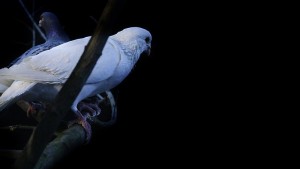 |
James Cohan Gallery, Shanghai
1/F Building 1, No.1 Lane,
170 Yue Yang Road,
Shanghai 200031, PRC CHINA map *
tel: +86 21 5466 0825
fax: +86 21 5466 0823
send email
website
|

Enlarge
|
| The Tell-tale Heart
|
|
| by James Cohan Gallery, Shanghai
Location: James Cohan Gallery
Artist(s): Martha COLBURN, Hiraki SAWA, CHENG Ran, FENG Meng Bo, Apichatpong WEERASETHAKUL, ZHANG Ding
Date: 27 Feb - 11 Apr 2010
James Cohan Gallery Shanghai is pleased to present The Tell-tale Heart, a tribute to the classic short story by American 19th century novelist and poet Edgar Allan Poe. The exhibition showcases recent video works by artists from China, America, Japan, and Thailand that explore the diversity and possibilities of narrative forms.
Morakot (Emerald)(2007), a video installation by the award-winning Thai filmmaker-video artist Apichatpong Weerasethakul, intertwines memory with intimate experience. Morakot is a derelict hotel in the heart of Bangkok that opened in the 1980s when Thailand experienced accelerated economic growth and Cambodians poured into Thai refugee camps after the devastating conflict between Vietnamese and Cambodian forces. The setting is a dilapidated hotel room filled with floating feathers and haunted by ghostly figures in bed. Inspired by the Danish writer Karl Gjellerup's 1906 Buddhist novel, The Pilgrim Kamanita, the protagonists are reincarnated as two celestial stars who re-tell their stories to each other until they no longer exist. Morakot revisits fictitious memories bound to the history of the hotel through three voiceovers, each whispering their sorrows and eternal wait for love.
Mysterious stories continue to unfold in the dreamscapes mapped by Japanese-born, British-trained artist Hiraki Sawa. Known for artificial landscapes and displaced worlds, shifting between domestic and imaginary spaces, Sawa has ventured outside the confines of his home that have provided settings for his well-known earlier pieces like Spotter and Hako. Out of the Blue (2008), a projected diptych, is shot in natural settings—where a Ferris wheel exists in a desert oasis, or a tiny house with electric light nestles in the root of a tree. In a shadow-filled room an empty birdcage sways. On the adjoining screen, people incrementally accumulate and descend from a massive white sand dune. The viewer is jostled between two worlds. By meticulously combining images both fabricated and from real world elements, Out of the Blue engages the viewer's imagination to question a sense of place and discernible reality.
Rock Dove (2009), a short video by Hangzhou-based emerging artist Cheng Ran, begins with a flock of doves roosting in the dark inside a factory building. This five-minute work is a subtle and unsettling dance enacted by the flock. The video reaches its dramatic peak with the birds' eruptive and chaotic response to the sudden illumination of the factory's fluorescent lamps. Another emerging artist from Hangzhou, Li Ming, brings us the celebration of youth and intimacy in his video XX (2009), where two boys, seated on a rock, cling to each other while exchanging their T-shirts. The slow and painstaking process becomes a seemingly innocent physical dialogue, addressing both the ambiguity of their relationship and sexuality.
Experimental narrative modes are notable in the ambitious nine-channel video installation The Dream of Yabulai (2008) by Shanghai-based Zhang Ding. This work has been re-orchestrated as a site-specific work and is situated under the gallery's staircase. The supporting structure of the work is an open wooden lattice framework suggesting unfinished architecture. Within the framework are the nine video screens. The central screen shows a monkey assigning identify-specific props or costumes to eight actors who then assume their new roles on one of the individual screens. The subsequent eight different role-plays depict various themes, unveiling a composite of new behavior in a "micro-society" while attempting to visualize key ideas or events in human history, such as mapping territory, the creation of theory, science, energy, art, religion and war.
Two other tell-tale hearts inhabit the world of animation. Beijing-based Feng Mengbo is a Chinese video-new media veteran. His recent video game installation Long March: Restart revisits his earlier piece, Long March: Game Over. The artist pushes his experiments further by integrating the elements of Chinese model operas with late 1990's pixel aesthetics. Appropriating 1980-90s vintage video games (Super Mario, Contra, Street Fighters, etc), Long March: Game Over relates a Don Quijotesque odyssey in a punkish manner.
New York and Amsterdam-based animation filmmaker Martha Colburn offers a kaleidoscopic view of modern life in her recent animation One & One is Life (2009), where Hollywood stereotypes as Wonder Woman, car crashes, and policemen are seen in a montage of conflict that drives a violent and uneasy world. Unfolding in a precise, deliberate pace—and accompanied by its melancholy soundtrack—One &One is Life tallies up its tale of grief, culminating with symbols of hearts fleeing away.
Curated by Leo Xu
|
|
|
|
|
